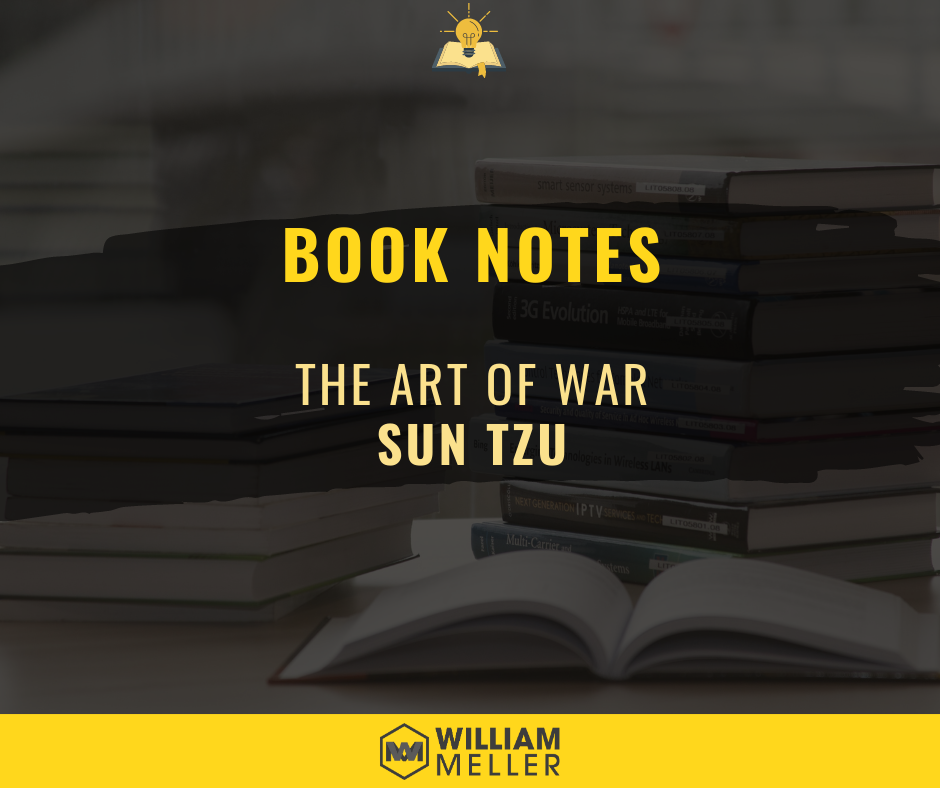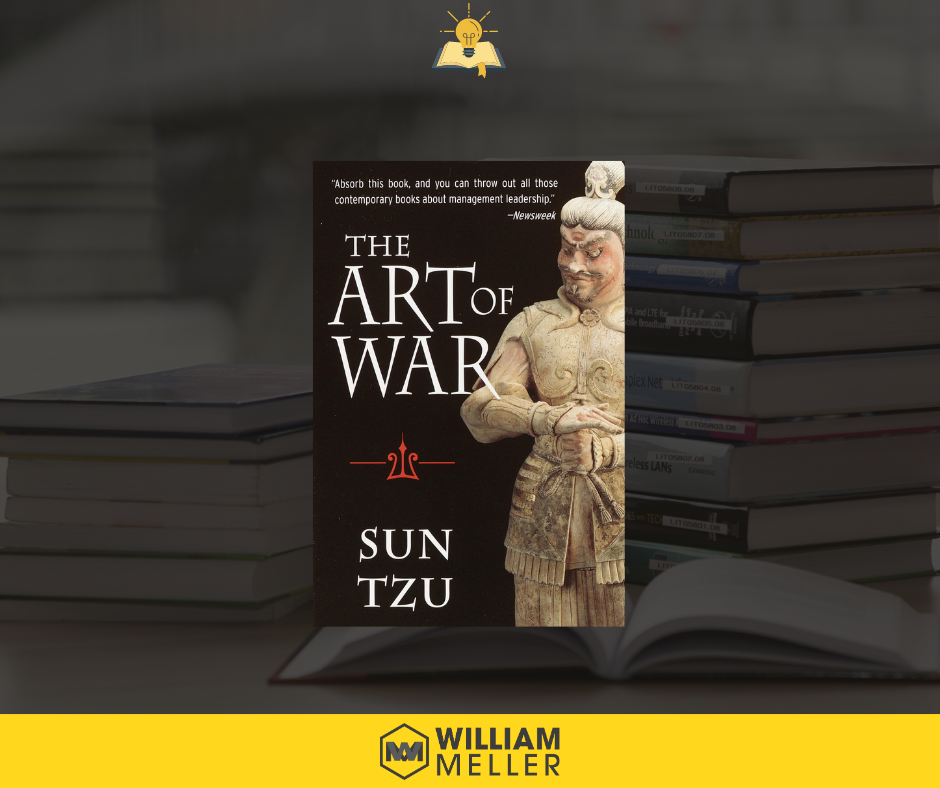
Summary and analysis of The Art of War by Sun Tzu. Learn key principles and strategies for success in both war and business.
Summary
Title: The Art of War
Author: Sun Tzu
Themes: Leadership, Management, Business, Economy, Politics
Year: 475 B.C.E
Publisher: Sun Tzu
ISBN: 0486425576, 9780486425573
Pages: 99
War may not always make the headlines, but its impact on human history cannot be overstated.
For centuries, leaders and soldiers have turned to Sun Tzu's book for strategies and insights on how to succeed in battle. But this ancient text is not just for warriors; its lessons on leadership, strategy, and tactics have made it a timeless classic for anyone seeking to gain a competitive edge.
Whether you're a CEO, entrepreneur, or just looking to improve your own personal skills, 'The Art of War' is a must-read.
Widely regarded as "The Oldest Military Treatise in the World," this landmark work covers principles of strategy, tactics, maneuvering, communication, and supplies.
The Art of War is one of the earliest known treatises on warfare strategy in history, written by the ancient Chinese military strategist Sunzi (also known as Sun-Tzu).
As known in Chinese as Bingfa, this guide offers information about various battle maneuvers and tactics, as well as advice on scouting the enemy's location and terrain before attacking.
It is hard to know exactly when The Art of War was written, but most scholars think it was written between 475 and 221 B.C.E., during the Warring States period.

The premise of The Art of War is that war should be avoided with diplomacy, but highlighting it with key principles that you may consider (during a war).
Know your enemy and know yourself: Sun Tzu emphasizes the importance of understanding your own strengths and weaknesses as well as those of your adversary.
Planning and preparation: A successful campaign requires careful planning and preparation, including gathering intelligence, choosing the right terrain, and having the right supplies.
Flexibility: Sun Tzu emphasizes the importance of being flexible and adapting to changing circumstances on the battlefield.
The use of deception: Sun Tzu recognizes that success in war often requires the use of deception, such as feigning weakness to lure the enemy into a trap.
The value of speed: Sun Tzu stresses the importance of being quick and decisive in battle, so as to take advantage of opportunities and minimize the enemy's ability to respond.
Unifying command: Sun Tzu emphasizes the importance of having a unified command structure, with clear lines of authority and a single commander in charge.
Avoiding prolonged conflict: Sun Tzu advises avoiding prolonged conflict, as it can drain resources and cause unnecessary suffering. Instead, he suggests seeking decisive victories that can be achieved quickly.
The importance of morale: Sun Tzu recognizes the importance of maintaining the morale of one's own troops, as well as undermining the morale of the enemy.
Knowing when to fight: Sun Tzu emphasizes the importance of choosing the right time to fight, when the odds are in your favor, and avoiding unnecessary battles.
My Book Highlights:
"... The greatest victory is that which requires no battle..."
"... It is easy to love your friend, but sometimes the hardest lesson to learn is to love your enemy..."
"... Appear weak when you are strong, and strong when you are weak..."
"... The supreme art of war is to subdue the enemy without fighting..."
"... If you know the enemy and know yourself, you need not fear the result of a hundred battles. If you know yourself but not the enemy, for every victory gained you will also suffer a defeat. If you know neither the enemy nor yourself, you will succumb in every battle..."
"... Let your plans be dark and impenetrable as night, and when you move, fall like a thunderbolt..."
"... Supreme excellence consists of breaking the enemy's resistance without fighting..."
"... In the midst of chaos, there is also an opportunity..."
"... All warfare is based on deception. Hence, when we are able to attack, we must seem unable; when using our forces, we must appear inactive; when we are near, we must make the enemy believe we are far away; when far away, we must make him believe we are near..."
"... Victorious warriors win first and then go to war, while defeated warriors go to war first and then seek to win..."
"... If your enemy is secure at all points, be prepared for him. If he is in superior strength, evade him. If your opponent is temperamental, seek to irritate him. Pretend to be weak, that he may grow arrogant. If he is taking his ease, give him no rest. If his forces are united, separate them. If sovereign and subject are in accord, put a division between them. Attack him where he is unprepared, appear where you are not expected..."
"... The greatest victory is that which requires no battle..."
"... Engage people with what they expect; it is what they are able to discern and confirms their projections. It settles them into predictable patterns of response, occupying their minds while you wait for the extraordinary moment — that which they cannot anticipate..."
"... There is no instance of a nation benefitting from prolonged warfare..."
"... Treat your men as you would your own beloved sons. And they will follow you into the deepest valley..."
"... Move swift as the Wind and closely formed as the Wood. Attack like the Fire and be still as the Mountain..."
The book by Sun Tzu has been widely celebrated for its insights into the nature of conflict and leadership, but it is not without its controversies and criticisms. Some of the key criticisms of the book include:
Critiques of violence: Some have criticized "The Art of War" for promoting violence and militaristic values.
Cultural bias: Some have argued that the strategies outlined in "The Art of War" are culturally specific and may not be applicable in other contexts.
Lack of moral perspective: Some have criticized "The Art of War" for lacking a moral perspective, with some tactics such as deception and psychological warfare being seen as unethical.
Misapplication: Some have criticized "The Art of War" for being misapplied or oversimplified in modern-day contexts, leading to negative consequences such as aggressive business tactics or political strategies.
Despite these criticisms, "The Art of War" remains a widely read and influential text, with many of its principles being applied in fields ranging from military strategy to business and politics.
Ultimately, the book raises important questions about the nature of conflict and the role of power and leadership, making it a subject of ongoing debate and discussion.
When applying the principles of "The Art of War" in modern-day contexts, it is important to be cautious and consider the following:
Cultural sensitivity: Consider the cultural context in which you are operating and be mindful of cultural differences that may impact the effectiveness of certain strategies.
Ethical considerations: Some of the tactics outlined in "The Art of War," such as deception and psychological warfare, may be seen as unethical in some contexts. It's important to consider the ethical implications of your actions and to operate within the bounds of what is acceptable.
Contextual appropriateness: "The Art of War" was written for a different time and place, and not all of its principles may be applicable in modern-day contexts. It's important to consider the specific context in which you are operating and to apply the principles in a manner that is appropriate and relevant.
Balance: While "The Art of War" emphasizes the importance of winning, it is important to strike a balance between victory and other considerations, such as the well-being of those involved and the ethical implications of your actions.
By being mindful of these considerations, you can apply the principles of "The Art of War" in a manner that is both effective and responsible.
The principles of "The Art of War" and the concept of servant leadership can be seen as having both similarities and differences.
On the one hand, they both emphasize the importance of understanding the needs and motivations of those you lead.
On the other hand, "The Art of War" emphasizes the importance of winning at all costs, while servant leadership is centered around serving the needs of others.
One way to reconcile these principles is to view servant leadership as a form of strategic leadership, where the ultimate goal is to achieve success by serving the needs of others. In this view, the principles of "The Art of War" can be applied in a manner that is consistent with the principles of servant leadership, such as understanding the needs of employees and customers, creating a unified vision and purpose, and inspiring others through your actions and leadership.
However, it's also important to recognize that some of the principles of "The Art of War" may not be consistent with the principles of servant leadership.
For example, the use of deception or psychological warfare may not align with the values of servant leadership, which emphasizes honesty and transparency.
In conclusion, while "The Art of War" and servant leadership may appear to be at odds, they can actually complement each other in the right context.
By approaching leadership with a focus on serving the needs of others and using the principles of "The Art of War" to achieve success in a responsible and ethical manner, leaders can create a positive and empowering work environment for their employees.
From understanding your own strengths and weaknesses to the value of speed and morale, Sun Tzu's principles offer valuable insights for modern-day leaders and individuals.
So, whether you're in the midst of a battle or just trying to achieve your goals, remember the words of Sun Tzu and stay one step ahead of the competition.
Sun Tzu was born around 544 B.C. He was a Chinese military general who helped King Ho-lu capture the city of Ying, bringing about the fall of the Ch'u state in 506 B.C. Because of this, he became known throughout the country as a wise and respected leader. His collection of essays called The Art of War is the oldest military treatise in the world. The text became known through translations by Father J. J. M. Amiot, a French Jesuit priest. Sun Tzu is believed to have died in 496 B.C.
I am incredibly grateful that you have taken the time to read this post.
Your support and engagement mean the world to me, and I truly appreciate your interest in the topics I write about.
I hope that you have found this post informative, educational, and engaging.
If you are interested in reading more of my work, please visit other articles here on the website.
I promise to continue providing valuable and high-quality content for your enjoyment and education.
Thank you again for reading and I hope to see you soon!
Here are some related articles you may enjoy:
There are even more good things I've prepared for you!
Subscribe here to receive new posts in your Email!
Do you want to read some book notes and recommendations? Discover more here!
Do you want to have amazing weekly content curation? Discover more here!
Ready to make a positive impact?
Support my work by sharing my content with your network.
Your simple act of kindness can reach new heights and help spread valuable information.
Want to show your support in a tangible way? A virtual coffee is a small but mighty way to show your appreciation and give me the extra energy to keep crafting valuable content!



